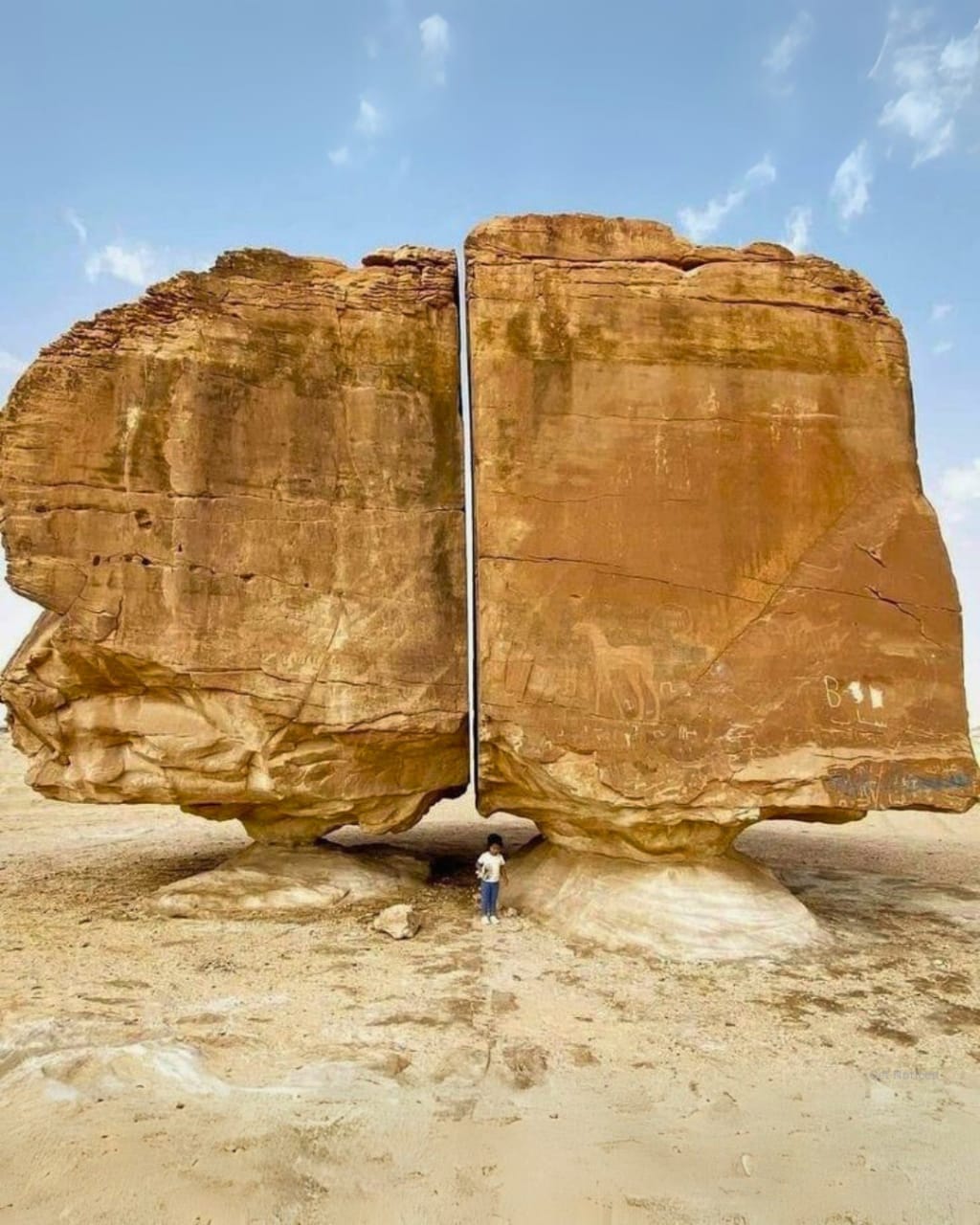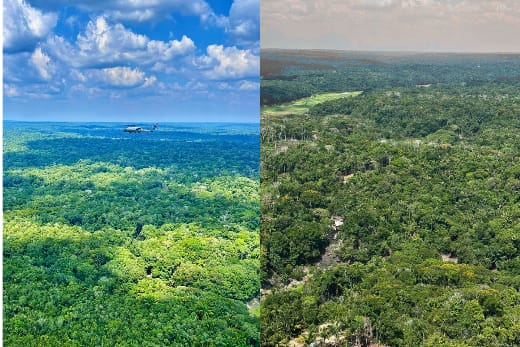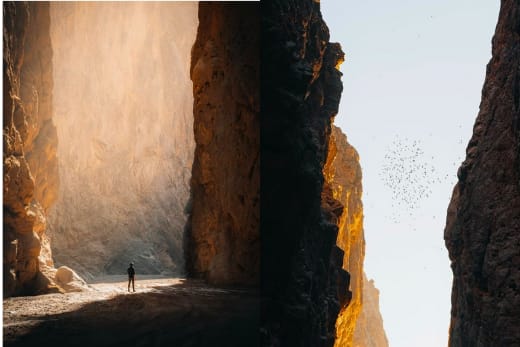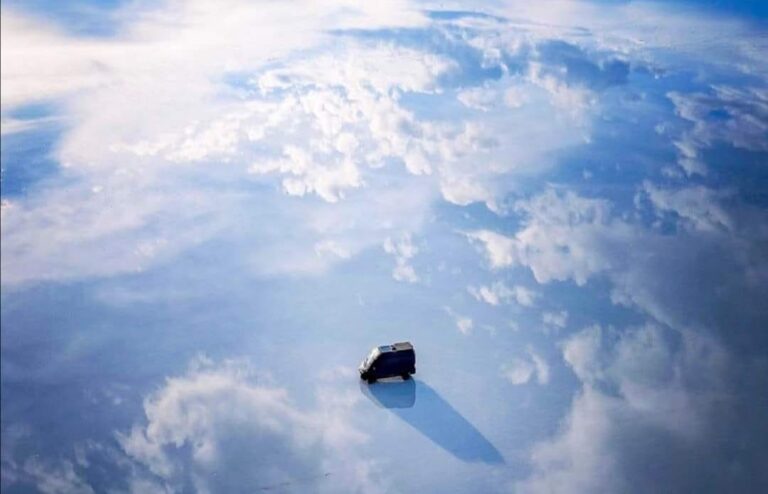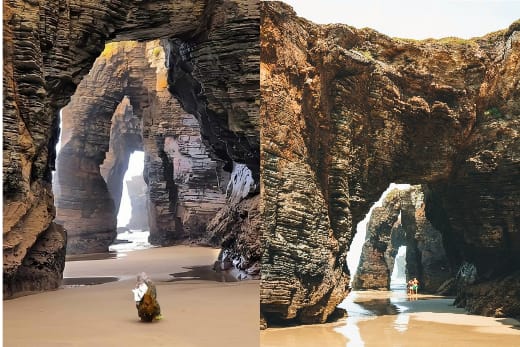Deep in the deserts of Tayma, Saudi Arabia, stands one of the world’s most puzzling natural wonders — the Al Naslaa rock formation. What makes it remarkable isn’t just its size or balance, but a perfectly straight split that divides the massive sandstone boulder into two halves, as if sliced with a laser.
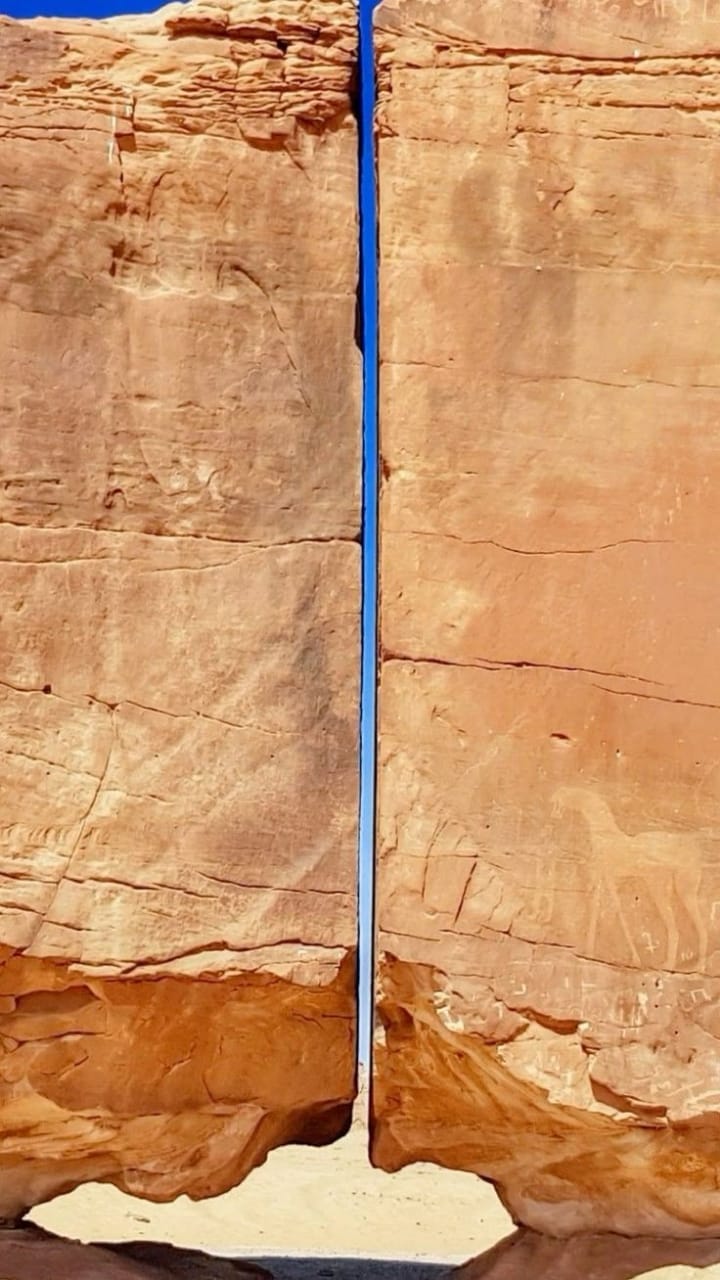
Each half balances delicately on small natural pedestals, with a razor-thin gap separating them. Yet despite centuries of wind, sand, and erosion, the two sides remain perfectly aligned — not a shift, not a tilt.
Geologists believe the clean cut could be the result of natural faulting or erosion, aided by wind or minor seismic activity. Still, the precision of the split has sparked countless theories, from ancient tools to alien technology.
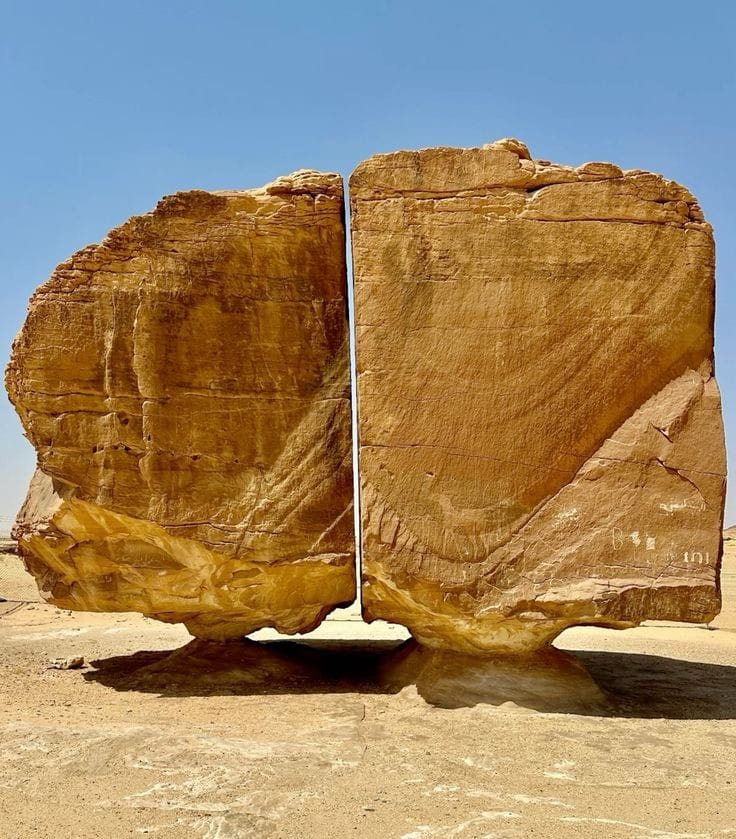
“This is nature’s geometry at its finest,” says Dr. Khalid Al-Mutairi, a Saudi geologist. “It’s likely a combination of natural processes — but its perfection makes it feel intentional.”
Nearby, ancient petroglyphs carved into the rock hint at the region’s long human history, adding even more mystery to the formation. Whether a geological fluke or something more, Al Naslaa continues to captivate explorers, scientists, and travelers, standing quietly in the sand — divided, but unshaken.
